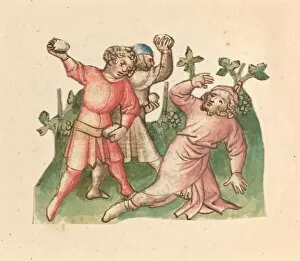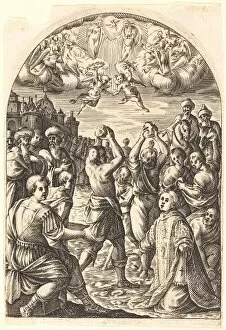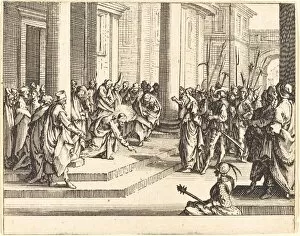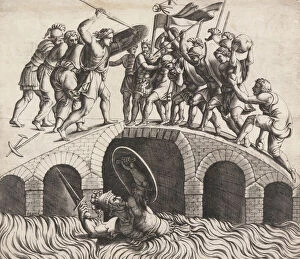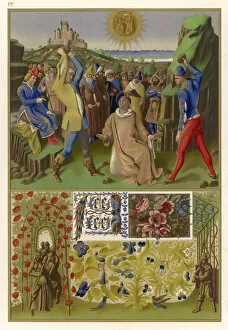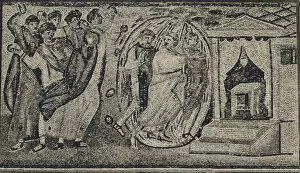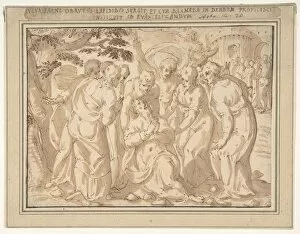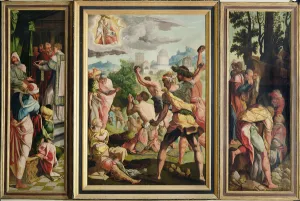Lapidation Collection (page 2)
"Lapidation: A Brutal Form of Martyrdom" Lapidation, also known as stoning, has been a harrowing method of execution throughout history
All Professionally Made to Order for Quick Shipping
"Lapidation: A Brutal Form of Martyrdom" Lapidation, also known as stoning, has been a harrowing method of execution throughout history. This cruel practice involved pelting the condemned individual with stones until death ensued. The haunting depictions in various artworks shed light on the tragic fate that befell many martyrs. One such depiction is Annibale Carracci's painting portraying the stoning of St. Stephen, who became the first Christian martyr in 36 AD. The artist captures the intensity and anguish on St. Stephen's face as he endures this agonizing punishment for his faith. In another artwork titled "The Martyrdom of Saint Stephen, " an etching from 1635 showcases the brutality faced by this courageous figure. It serves as a stark reminder of the dangers early Christians encountered while spreading their beliefs. The Bible illustrations found in Royaumont's Old Testament further emphasize lapidation's prominence within religious texts. Zechariah, a High Priest, suffered this gruesome fate at King Joash's command after being taken from his duties. Not limited to biblical accounts alone, other engravings depict scenes like Christ and the adulterous woman or even historical events such as Count Guarin being stoned alongside Saint Leger in 675 AD. These visual representations serve as powerful reminders of humanity's capacity for cruelty and intolerance towards those who dare to challenge societal norms or express their beliefs freely. Moreover, they highlight how individuals like St. Stephen bravely embraced their faith despite facing unimaginable suffering and persecution. Stonings were not confined to ancient times; even during more recent periods depicted in Jean Michel Moreau le Jeune’s engraving or Royaumont Bible illustrations from 1811, we witness its continued use as a form of punishment for blasphemy or breaking religious laws such as violating Shabbat (Sabbath).



